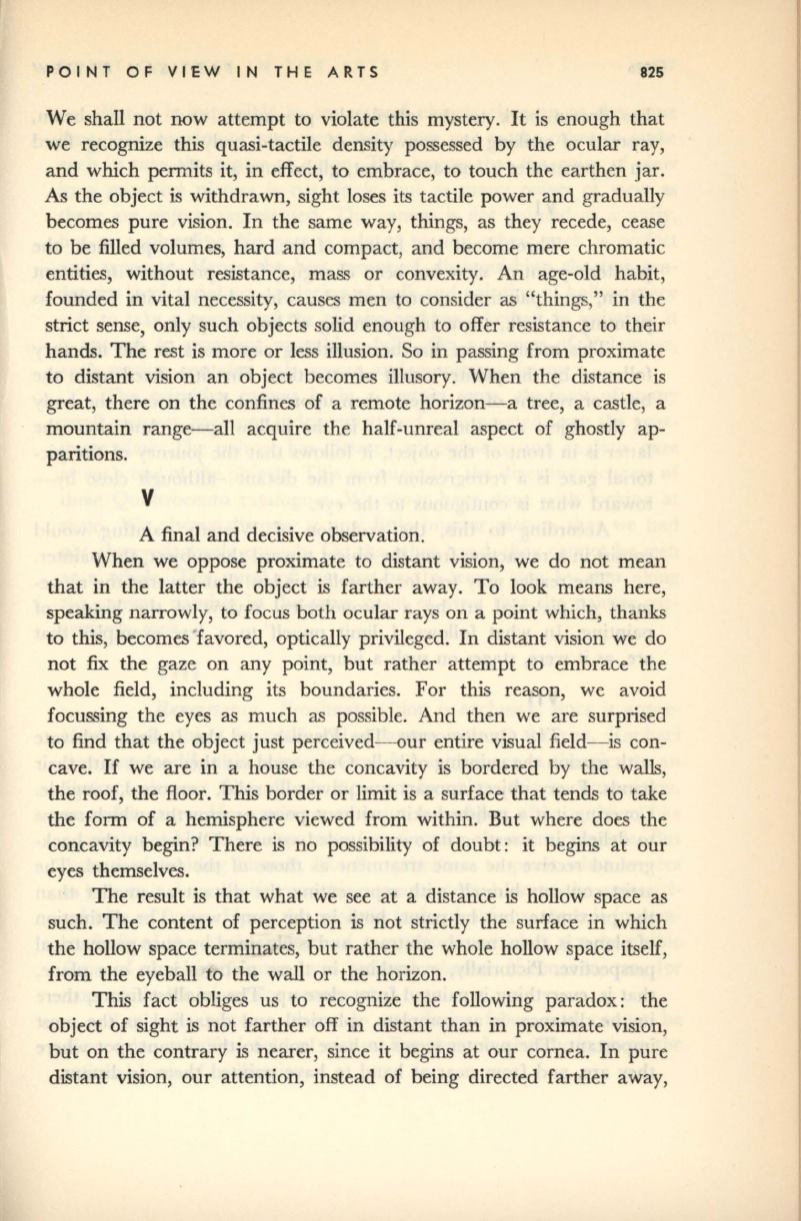
POINT OF VIEW IN THE ARTS
825
We shall not now attempt to violate this mystery. It is enough that
we recognize this quasi-tactile density possessed by the ocular ray,
and which permits it, in effect, to embrace, to touch the earthen jar.
As
the object is withdrawn, sight loses its tactile power and gradually
becomes pure vision. In the same way, things, as they recede, cease
to be filled volumes, hard and compact, and become mere chromatic
entities, without resistance, mass or convexity.
An
age-old habit,
founded in vital necessity, causes men to consider as "things," in the
strict sense, only such objects solid enough to offer resistance to their
hands. The rest is more or less illusion. So in passing from proximate
to distant vision an object becomes illusory. When the distance is
great, there on the confines of a remote horizon-a tree, a castle, a
mountain range-all acquire the half-unreal aspect of ghostly ap–
paritions.
v
A final and decisive observation.
When we oppose proximate to distant vision, we do not mean
that in the latter the object is farther away. To look means here,
speaking narrowly, to focus both ocular rays on a point which, thanks
to this, becomes favored, optically privileged. In distant vision we do
not
fix
the gaze on any point, but rather attempt to embrace the
whole field, including its boundaries. For this reason, we avoid
focussing the eyes as much as possible. And then we are surprised
to find that the object just perceived--our entire visual field- is con–
cave.
If
we are in a house the concavity is bordered by the walls,
the roof, the floor. This border or limit is a surface that tends to take
the form of a hemisphere viewed from within. But where does the
concavity begin? There is no possibility of doubt: it begins at our
eyes themselves.
The result is that what we see at a distance is hollow space as
such. The content of perception is not strictly the surface in which
the hollow space terminates, but rather the whole hollow space itself,
from the eyeball to the wall or the horizon.
This fact obliges us to recognize the following paradox: the
object of sight is not farther off in distant than in proximate vision,
but on the contrary is nearer, since it begins at our cornea. In pure
distant vision, our attention, instead of being directed farther away,


